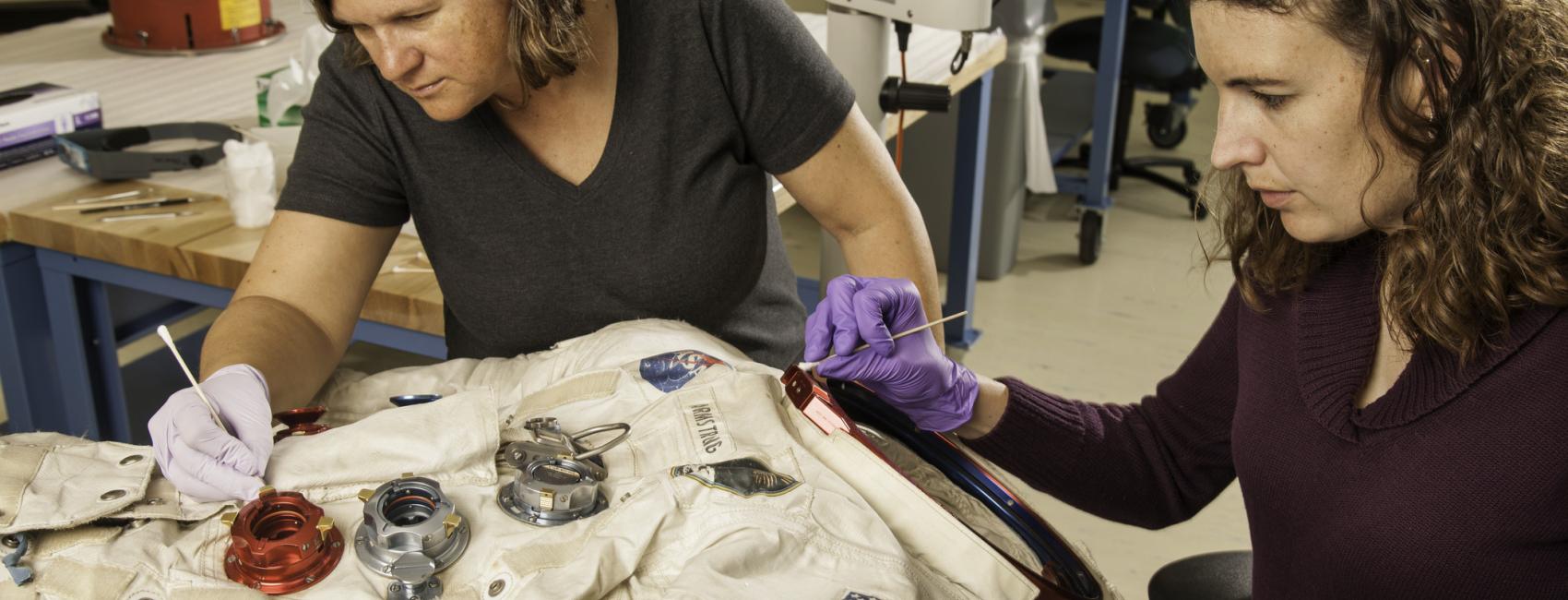
Feb 03, 2011
If you’re looking for some online fun, try out several Web activities from our newest exhibition, The Barron Hilton Pioneers of Flight Gallery. The exhibition introduces some of the colorful aviation personalities from the 1920s and 1930s.
A lot of effort and careful research went into each one of these activities. We first generated a list of possible ideas. We narrowed the list by asking which ideas make the best use of the technology to teach specific content. We hired a Web developer to help us. The interactives need to be thoughtfully integrated into the surrounding exhibition content. After we decided on the scenarios, we did some additional research. We had to track down photos of the World Cruiser flight and film footage of the Lindberghs. Our photographer took photos of objects in the collections – we wanted to display some of the interesting items that the Lindberghs packed on their trip. These objects had not been on display before. In some cases we also consulted with outside experts, including some of the Tuskegee Airmen themselves! What were the main decisions made by flight leaders on escort missions? What happened when things didn’t go well? Once our designer had a prototype activity, we took it onto the floor and asked our visitors to test it. Some of the interactives, the Lindbergh one for example, went through major design changes. We wanted to ensure that people find them engaging and easy to complete. Do they take the right amount of time or are they too complicated? Will they attract the right age groups? We also tested the activities with some of our toughest critics, our National Air and Space Museum colleagues. They all had an opportunity to weigh in on the activities. When we completed usability testing and made sure visitors were getting the messages we wanted to convey, we went into final production. So give them a try and let us know what you think. Which did you like the best? Did you learn anything new? And, if you have a chance to visit the Museum, please be sure to view the Barron Hilton Pioneers of Flight Gallery. Tim Grove is Chief of Education at the National Air and Space Museum's Mall building.

We rely on the generous support of donors, sponsors, members, and other benefactors to share the history and impact of aviation and spaceflight, educate the public, and inspire future generations. With your help, we can continue to preserve and safeguard the world’s most comprehensive collection of artifacts representing the great achievements of flight and space exploration.
We rely on the generous support of donors, sponsors, members, and other benefactors to share the history and impact of aviation and spaceflight, educate the public, and inspire future generations. With your help, we can continue to preserve and safeguard the world’s most comprehensive collection of artifacts representing the great achievements of flight and space exploration.